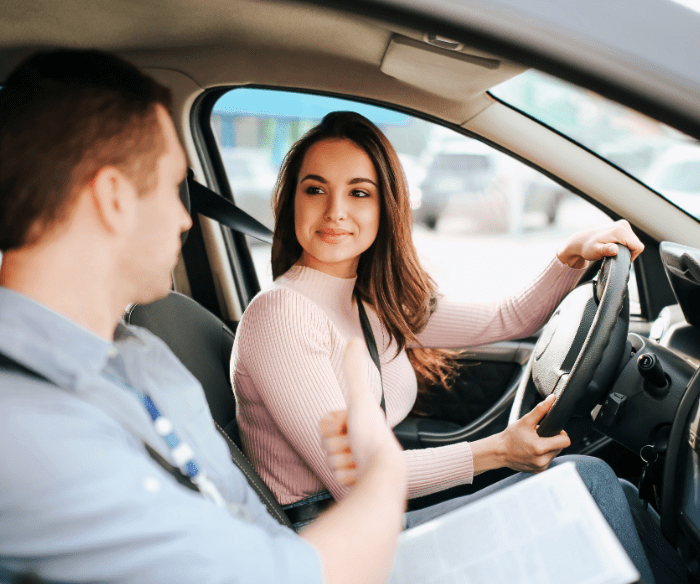A score of at least 38 out of 46 on the California driver’s license knowledge test proves you comprehend traffic laws and safety regulations. Despite rumors, these tests are not designed to trick new drivers. Questions are all taken from the California Driver Handbook. When you study and prepare adequately, you increase your odds of passing and keep your stress levels under control.
Study Tips for the Written Driving Test
Be prepared for the California DMV driving test written exam with the following study habits:
Prioritize the importance of driver’s ed
Taking a driver’s education course prepares you for the written driving test. Because it’s online, you can complete it at your own pace. The self-testing available through sample tests help you gauge how well you’re assimilating the information and whether you’re ready to take the test at the DMV. The online course is convenient and affordable, and you don’t have to commute anywhere!
Study the handbook and take practice tests
Read the California Driver Handbook thoroughly, take notes, and include definitions for unclear terms. Make sure you understand all of the concepts and laws. If you are confused, you can highlight individual sections and research online or ask a professional for clarification. You can even watch videos online to clarify ideas and remember points better.
Like your driver’s education course, the California DMV offers sample driver license knowledge practice tests. Reviewing these helps you get familiar with the written exam’s wording and structure. Gauge where you are at each time you take a practice test, and see what areas you need to review more in-depth.

Practice test-taking strategies
The night before your test, make sure you relax and sleep early. On the morning of, eat a well-balanced breakfast, and play some upbeat music on your way to the DMV. During the test, carefully read each question, underlining key terms if needed. If you are not confident about an answer, use the process of elimination and try to narrow down your answer to the best two choices. Use your common sense when deciding on the correct answer. Lastly, be sure to double-check your work in case you missed something.
Know what you need to bring
Teenagers who are between 15.5-18 years old need to gather several documents before taking the vision and written exam. These include a completed application for a driver permit, original birth certificate, proof of taking driver’s ed, social security number document, proof of identity and legal presence in the United States, and proof of California residency.
After submitting these forms and taking a vision exam and knowledge test, the DMV clerk will take teen drivers’ fingerprints and photographs. Please note that during the first year you have your permit, you are not allowed to drive between 11 pm to 5 am or transport passengers under 20 years old unless accompanied by a guardian, certified driving instructor, or licensed driver over 25 years old.
Overall, maintain a positive attitude and think good thoughts about the California DMV driving test written exam. As a side note, you are allowed to take the test three times before you have to pay for a new application. If you fail, you need to wait one week before retaking the test.
Final Thoughts on Studying for Your DMV Exam
Knowledge tests are walk-in only, but it is encouraged to take your test early in the morning, so your mind is clear and ready to take on the questions.
To learn more about what study habits will help you with the CA DMV written exam, contact the experts at Alliance Defensive Driving School. Our licensed professionals will be happy to answer any questions you have.





